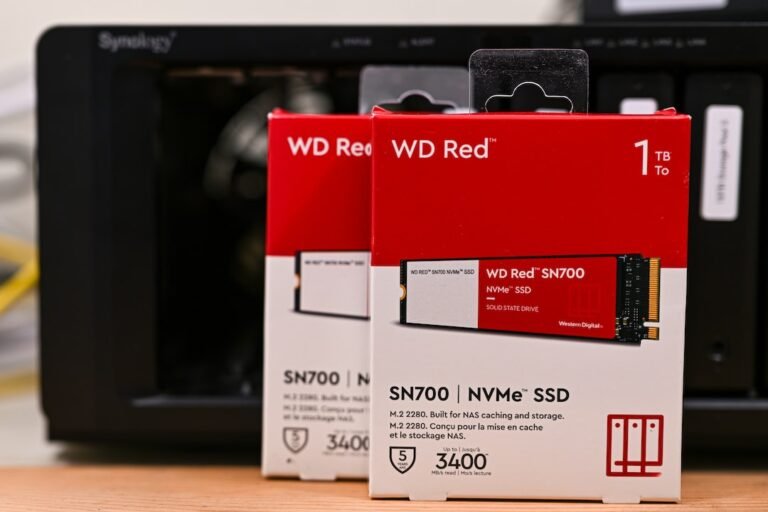Introduction
Are you concerned about your online privacy and security? Do you want to take control of your network and protect your data from prying eyes? If so, building your own DIY VPN router might just be the solution you’re looking for!
In this article, we’ll dive into the world of DIY VPN routers, exploring how you can build your own secure network and customize your VPN setups. We’ll walk you through the process step-by-step, providing valuable insights and practical tips along the way.
So, put on your tech-savvy hat, grab your tools, and get ready to take control of your internet experience!
Why Build Your Own VPN Router?
Before we delve into the technical details, let’s first understand why building your own VPN router is a great idea. Here are a few compelling reasons:
Enhanced Privacy: By building your own VPN router, you can encrypt all of your internet traffic and protect it from potential eavesdroppers. This means that your online activities, such as browsing, streaming, and even banking, remain private and secure.
Customization Options: DIY VPN routers offer you the flexibility to customize your VPN setups according to your specific needs. You can choose VPN providers, select server locations, and configure advanced security features, giving you complete control over your network.
Better Performance: Commercial VPN services often suffer from slow speeds due to overcrowded servers. With a DIY VPN router, you can optimize your network for faster and more reliable connections, ensuring smooth browsing and streaming experiences.
- Seamless Integration: A DIY VPN router seamlessly integrates with all your devices, including smartphones, laptops, smart TVs, and gaming consoles. Once set up, you can enjoy secure and private internet access on all your devices without any additional configuration.
Now that we understand the benefits, let’s jump into the nitty-gritty of building your own DIY VPN router.
Choosing the Right Router for Your DIY Project
To start your DIY VPN router project, you’ll need to select a suitable router. Here are a few factors to consider:
Router Compatibility: Ensure that the router you choose is compatible with open-source firmware, such as DD-WRT, OpenWRT, or Tomato. These firmware options provide the flexibility and advanced features required for building a DIY VPN router.
Processing Power: Look for a router with adequate processing power to handle the VPN encryption and decryption process. A router with a CPU speed of 1 GHz or above is recommended for optimal performance.
Wireless Standards: Consider the wireless standards supported by the router. If you need high-speed wireless connectivity, make sure the router supports the latest Wi-Fi standards, such as 802.11ac or Wi-Fi 6.
- Ethernet Ports: Evaluate the number of Ethernet ports available on the router. Sufficient Ethernet ports are essential if you plan to connect multiple devices directly to the router, such as gaming consoles, smart TVs, or home automation devices.
Once you’ve selected the right router, it’s time to move on to the installation and setup process.
Installation and Setup Process
Building a DIY VPN router might sound intimidating at first, but with the right guidance, it can be a straightforward process. Here’s a step-by-step guide to help you get started:
Research and Preparation: Before you begin, research the router model you’ve chosen and familiarize yourself with the installation process. Review online guides and tutorials specific to your router model to ensure a smooth installation.
Backup Existing Router Firmware: It’s crucial to backup your existing router firmware before installing the custom firmware. This allows you to revert to the original firmware if needed. Follow the instructions provided by the custom firmware’s website to create a backup.
Flashing the Custom Firmware: Once you’ve backed up your existing firmware, you’ll need to flash the custom firmware onto your router. Each firmware has its specific flashing process, so make sure to follow the detailed instructions provided by the firmware’s website.
Configuring the VPN: After successfully flashing the custom firmware, it’s time to configure your VPN settings. Access the router’s web interface and navigate to the VPN settings section. Enter your VPN provider’s details, including server addresses, usernames, and passwords.
Testing and Troubleshooting: Test your VPN connection to ensure it’s working correctly. Visit websites like https://www.whatismyip.com/ to check if your IP address is securely masked. If you encounter any issues, consult your VPN provider’s troubleshooting guidelines or seek assistance from online communities.
Securing Your Network: To further enhance the security of your DIY VPN router, consider implementing additional measures, such as enabling a firewall, setting up strong Wi-Fi passwords, or utilizing MAC address filtering. These steps can add an extra layer of protection to your network.
Congratulations! You’ve successfully built your DIY VPN router. Now, enjoy the benefits of a secure and private internet experience on all your devices.
Conclusion
Building your own DIY VPN router is a rewarding project that empowers you to take control of your online privacy and security. By customizing your VPN setups and creating a secure network, you can browse, stream, and communicate with confidence, knowing that your data is protected from prying eyes.
Remember, selecting the right router, following the installation and setup process with care, and taking extra security measures will ensure a smooth and successful DIY VPN router project.
So, gear up, follow the steps outlined in this article, and enjoy the freedom and peace of mind that comes with building your own secure network!
FAQ
Here are some frequently asked questions about DIY VPN routers:
| Question | Answer |
|---|---|
| What is a DIY VPN router? | A DIY VPN router is a custom-built router that allows you to set up a virtual private network (VPN) on your network. It enables you to encrypt your internet traffic and protect your online privacy. |
| How is a DIY VPN router different from a commercial VPN service? | While commercial VPN services provide pre-configured VPN connections, a DIY VPN router allows you to have complete control over your network and customize your VPN setup according to your needs. It offers better performance, enhanced privacy, and seamless integration with all your devices. |
| Can I use any router for a DIY VPN router project? | Not all routers are compatible with open-source firmware needed for DIY VPN router projects. Ensure that you choose a router that supports firmware like DD-WRT, OpenWRT, or Tomato. This will enable you to install custom firmware and create your VPN setups. |
| How secure is a DIY VPN router? | When properly set up, a DIY VPN router can provide a high level of security. By encrypting your internet traffic and masking your IP address, it helps protect your data from potential threats and eavesdroppers. However, it’s essential to use strong passwords, enable firewall protection, and keep the firmware up to date to ensure the security of your DIY VPN router. |
| Where can I find help if I encounter issues during the installation? | If you encounter any issues during the installation process, consult online forums, community-based websites, or the official documentation provided by the custom firmware’s website. These resources often contain troubleshooting guides and step-by-step instructions for resolving common issues. Additionally, reaching out to online communities or forums dedicated to DIY networking can provide valuable assistance from experienced users. |
Further Reading
For more information on home network setups, router troubleshooting, and other related topics, check out the following resources:
- Home Network Setup: A Comprehensive Guide
- Router Troubleshooting Tips and Tricks
- Wireless Router Security: Protecting Your Home Network
- Gaming Router Buying Guide: Enhance Your Gaming Experience
- The Rise of Mesh Wi-Fi Systems: Simplifying Home Networking
- 5G Routers for High-Speed Internet Connectivity
- Parental Control Routers: Protecting Your Children Online
- Open-Source Router Firmware: Freedom and Flexibility
- VPN Router Security: Protecting Your Privacy
- Smart Home Integration: Building a Connected Home
- Fiber Internet Routers: Fast and Reliable Connectivity
Remember, building and customizing your DIY VPN router opens up a world of possibilities, allowing you to create a secure and personalized online experience. Happy building!




